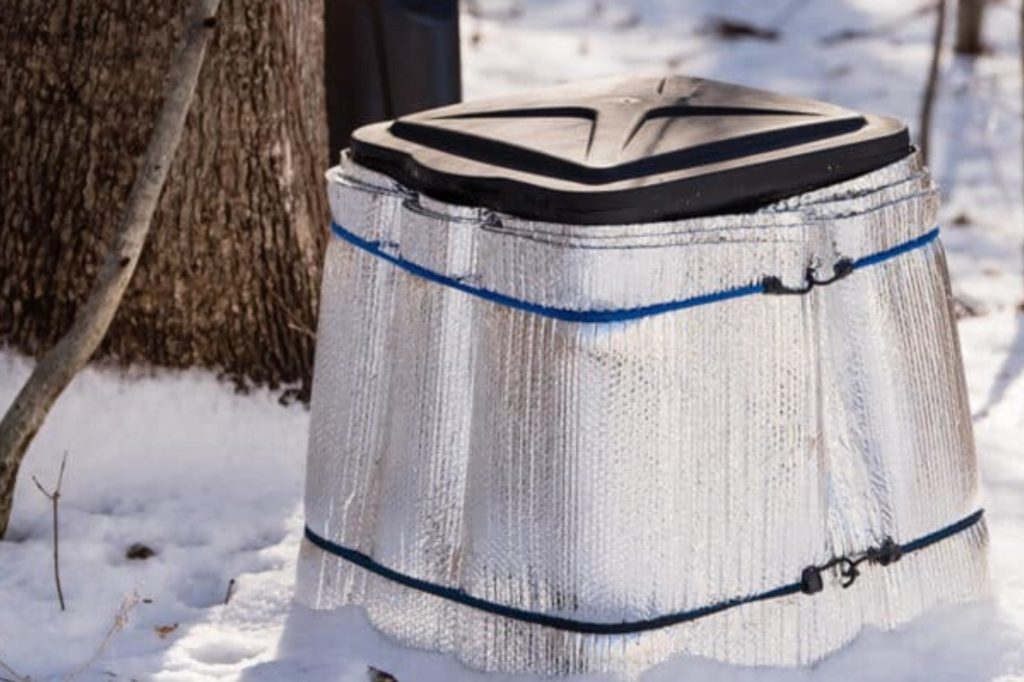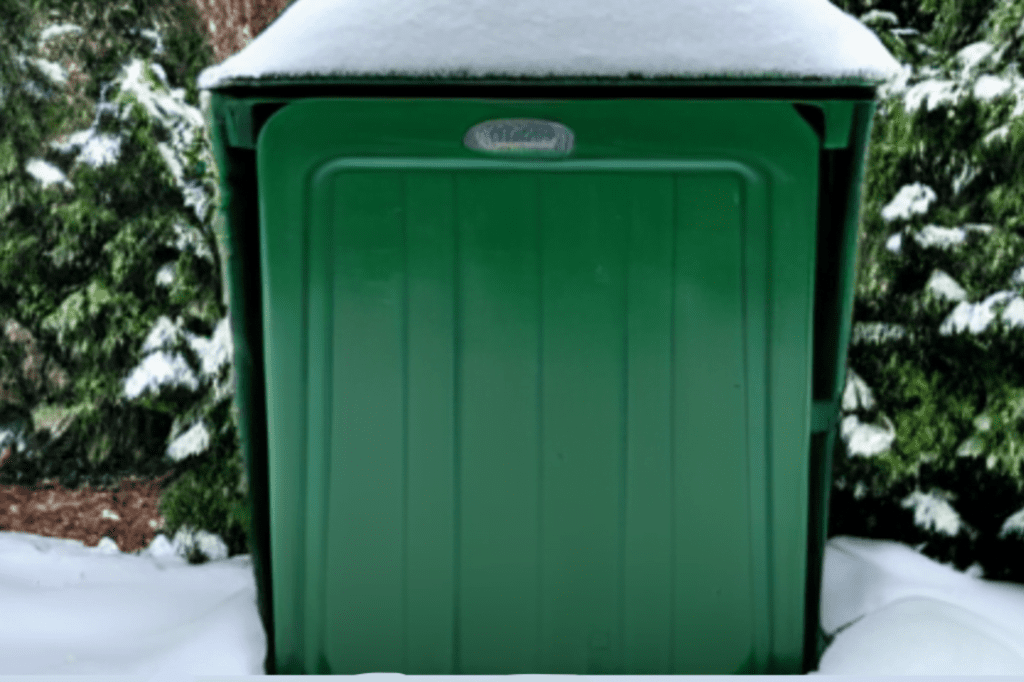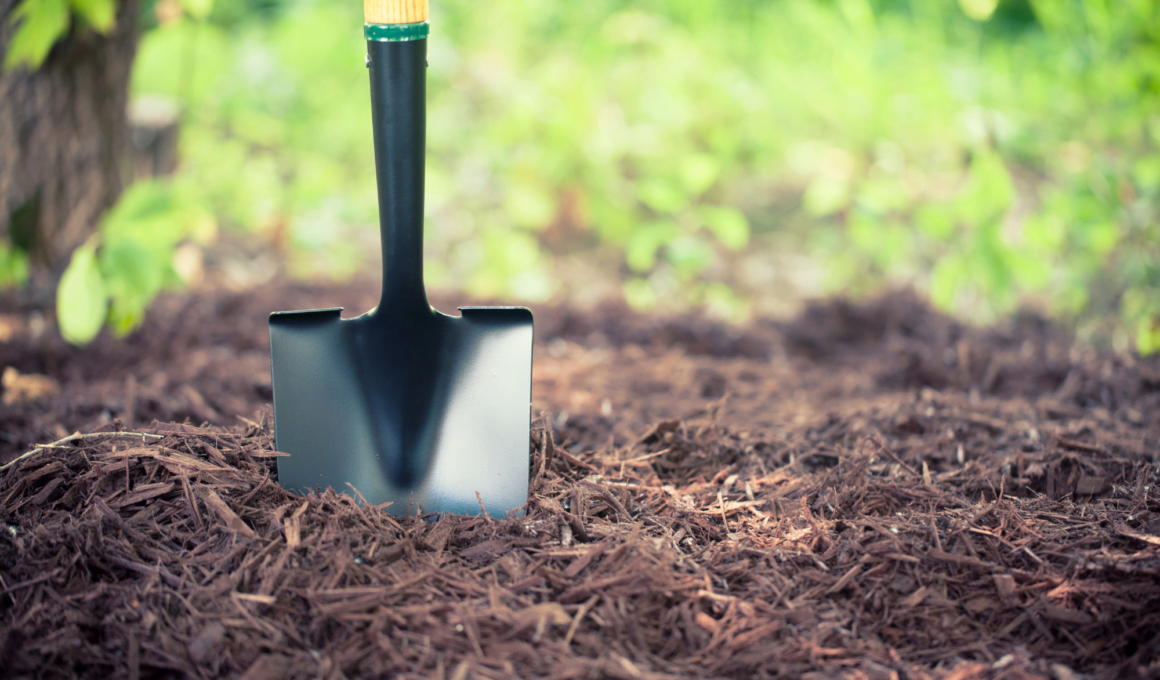Quick Summary
- Insulate compost pile or bin with materials like straw, leaves, or tarp to keep it warm and prevent freezing
- Regularly turn compost to aerate pile and distribute heat evenly
- Add nitrogen-rich materials (kitchen scraps, manure) to keep microorganisms active
- Monitor moisture levels and add water when necessary to keep compost moist but not waterlogged
Choose the Right Composting Method for Winter Storage
Don’t let the cold weather stop you from composting during the winter – there’s a perfect method for you! When it comes to composting indoors, it’s important to choose a method that suits your needs and keeps you safe. Composting in cold climates requires some extra attention to ensure success. One option for indoor composting is vermicomposting, which involves using worms to break down your organic waste. This method is great for small spaces and can be done year-round, even in the winter. You’ll need a worm bin, bedding material like shredded newspaper or cardboard, and of course, the worms themselves. Just make sure to keep the bin in a warm location, away from drafts and extreme temperatures.
Another option is bokashi composting, which utilizes a fermentation process to break down organic matter. With this method, you’ll need a special bokashi bin and bokashi bran, which is a mixture of beneficial microorganisms. Simply layer your food scraps with the bran in the bin, and let the fermentation process do its magic. This method is odor-free and can be done indoors, making it ideal for winter composting.
So don’t let the winter weather deter you from composting. Whether you choose vermicomposting or bokashi composting, there’s a method that’s perfect for composting indoors and in cold climates. Happy composting!
One option for indoor composting is vermicomposting, which involves using worms to break down your organic waste. This method is great for small spaces and can be done year-round, even in the winter. You’ll need a worm bin, bedding material like shredded newspaper or cardboard, and of course, the worms themselves. Just make sure to keep the bin in a warm location, away from drafts and extreme temperatures.
Another option is bokashi composting, which utilizes a fermentation process to break down organic matter. With this method, you’ll need a special bokashi bin and bokashi bran, which is a mixture of beneficial microorganisms. Simply layer your food scraps with the bran in the bin, and let the fermentation process do its magic. This method is odor-free and can be done indoors, making it ideal for winter composting.
So don’t let the winter weather deter you from composting. Whether you choose vermicomposting or bokashi composting, there’s a method that’s perfect for composting indoors and in cold climates. Happy composting!
Prepare Your Compost for Winter
Ensure that you adequately protect your compost during the colder months to maintain its quality and effectiveness. Winter composting requires some extra care and attention to keep your compost healthy and active. Here are some composting tips to help you prepare your compost for winter:- First, it’s essential to insulate your compost pile or bin. Use materials like straw, leaves, or even a tarp to cover your compost and keep it warm. This insulation will help retain heat and prevent your compost from freezing.
- Second, make sure to turn your compost regularly. This helps to aerate the pile and distribute heat more evenly. Turning the compost also ensures that the organic materials break down efficiently, even in the colder temperatures.
- Additionally, consider adding extra nitrogen-rich materials to your compost during winter. This can include kitchen scraps, coffee grounds, or even manure. These nitrogen-rich materials provide food for the microorganisms in your compost, helping them stay active and continue breaking down the organic matter.
- Lastly, monitor the moisture levels in your compost pile. Winter composting can be challenging because the cold temperatures can cause the pile to dry out. Make sure to add water when necessary, keeping your compost moist but not waterlogged.
Create Insulation for Your Compost Pile
To keep your compost pile cozy and protected from the elements, try insulating it with a layer of straw or leaves. When winter hits, it’s crucial to create a barrier that shields your compost from freezing temperatures. Start by building composting bins with sturdy materials like wood or wire mesh. These bins will help contain the compost and make it easier to insulate. Once your bins are in place, gather a thick layer of straw or leaves and cover the entire pile. This insulation will create a warm environment, allowing the decomposition process to continue even in cold weather. When choosing straw or leaves, make sure they’re dry and free from any chemicals or weeds. Wet or contaminated materials can hinder the composting process and attract unwanted pests. Spread the straw or leaves evenly over the pile, ensuring that every part is covered. This layer acts as a protective blanket, trapping heat and preventing the cold air from reaching the compost. Remember to regularly monitor the moisture levels in your compost pile during the winter months. Excessive moisture can lead to a soggy pile, which slows down decomposition and promotes anaerobic conditions. Adjust the moisture levels by adding dry materials like shredded newspaper or cardboard if needed. By taking these steps to insulate your compost pile, you can ensure that it remains active and productive throughout the winter season. So gather your straw or leaves, create composting bins, and cover your pile with insulation to keep it safe and warm.Monitor Moisture Levels
Keep an eye on the moisture levels in your compost pile throughout the colder months to maintain optimal conditions for decomposition. Monitoring techniques and moisture control are crucial for the success of your compost pile during winter. Here are three simple steps to help you manage the moisture levels effectively:- Check moisture regularly: Use a moisture meter or simply squeeze a handful of compost to determine its moisture content. Aim for a damp, sponge-like consistency. If it feels too dry, add water; if it’s too wet, mix in dry materials like leaves or shredded newspaper.
- Cover the pile: Use a tarp or plastic sheet to cover the compost pile. This will prevent excessive moisture from rain or snow while retaining heat. Make sure to secure the cover tightly to avoid it blowing away in strong winds.
- Create drainage: To prevent waterlogging and promote proper decomposition, ensure your compost pile has adequate drainage. Place it on a well-drained surface or elevate it on pallets, allowing excess water to drain away.
Protect Your Compost from Freezing
Don’t let freezing temperatures sabotage all your hard work and effort in creating nutrient-rich compost for your garden. Winter composting can present some challenges, but with a few simple tips, you can prevent your compost from freezing and ensure its success. First, consider the location of your compost pile. Placing it in a sheltered area, such as against a south-facing wall or under a tree canopy, can provide some protection from the cold. You can also insulate the pile by surrounding it with straw bales or covering it with a tarp.
Another tip is to regularly turn and mix your compost. This helps to distribute heat generated by the decomposition process and prevents it from freezing in one solid mass. Aim to turn the pile every few weeks, breaking up any clumps and ensuring that the materials are well-mixed.
Additionally, consider adding insulating materials to your compost pile. This can include dry leaves, straw, or even shredded newspaper. These materials create air pockets that act as insulation, helping to retain heat and prevent freezing.
Lastly, monitor the moisture levels of your compost. While it’s important to keep it moist, avoid overwatering, as excess moisture can freeze and inhibit the decomposition process. Aim for a damp, but not soggy, consistency.
By following these winter composting tips and preventing your compost from freezing, you can continue to produce nutrient-rich compost even in the coldest months. Keep your compost protected and watch as it transforms into a valuable resource for your garden.
First, consider the location of your compost pile. Placing it in a sheltered area, such as against a south-facing wall or under a tree canopy, can provide some protection from the cold. You can also insulate the pile by surrounding it with straw bales or covering it with a tarp.
Another tip is to regularly turn and mix your compost. This helps to distribute heat generated by the decomposition process and prevents it from freezing in one solid mass. Aim to turn the pile every few weeks, breaking up any clumps and ensuring that the materials are well-mixed.
Additionally, consider adding insulating materials to your compost pile. This can include dry leaves, straw, or even shredded newspaper. These materials create air pockets that act as insulation, helping to retain heat and prevent freezing.
Lastly, monitor the moisture levels of your compost. While it’s important to keep it moist, avoid overwatering, as excess moisture can freeze and inhibit the decomposition process. Aim for a damp, but not soggy, consistency.
By following these winter composting tips and preventing your compost from freezing, you can continue to produce nutrient-rich compost even in the coldest months. Keep your compost protected and watch as it transforms into a valuable resource for your garden.
Why Is Covering My Garden in the Winter Essential for Compost Storage?
Covering your garden in the winter is essential for compost storage. The right winter garden cover tips can help protect your compost from harsh weather conditions, preventing it from turning into a soggy mess. A cover acts as a shield, insulating the compost and allowing it to decompose gradually, preserving valuable nutrients. By using winter garden cover tips, you ensure that your compost remains in optimal condition for spring gardening.
Turn Your Compost Regularly
Make sure you regularly mix and turn your compost to keep the decomposition process active and prevent it from freezing into a solid mass. Turning your compost regularly is crucial, especially during the winter months, as it helps improve composting efficiency and ensures a successful decomposition process. By turning your compost, you mix the materials together, allowing for better airflow and distribution of moisture, which are both essential for proper decomposition. When you turn your compost, you create an environment that is conducive to the breakdown of organic matter, even in colder temperatures. Regularly turning your compost helps to maintain the optimal temperature range for decomposition, which is typically between 100 and 160 degrees Fahrenheit. This process not only prevents your compost from freezing but also accelerates the breakdown of materials, resulting in nutrient-rich compost much faster. Moreover, turning your compost regularly has several benefits. It helps to evenly distribute microorganisms throughout the pile, ensuring that all the organic matter gets broken down efficiently. This results in a more balanced and nutrient-rich compost that is beneficial for your plants and garden. Additionally, turning your compost can help eliminate any unpleasant odors that may occur during the decomposition process. So, make it a habit to turn your compost regularly, even during the winter months. By doing so, you will not only prevent your compost from freezing but also improve its efficiency and create high-quality compost that will benefit your garden. Stay safe and enjoy the benefits of compost turning!Use a Compost Thermometer to Monitor Temperature
To ensure optimal decomposition, it’s essential that you monitor the temperature of your compost using a compost thermometer. This handy tool allows you to keep track of the internal temperature, ensuring that the composting process is proceeding efficiently even in cold climates. Here are some tips for using a digital thermometer and composting in the winter:- Insert the thermometer probe into the center of the compost pile. This will give you an accurate reading of the temperature inside.
- Check the temperature regularly, ideally every few days. This will help you identify any potential issues, such as the compost becoming too cold and slowing down the decomposition process.
- Aim for a temperature range of 110 to 160 degrees Fahrenheit. This range promotes the growth of beneficial bacteria and helps break down organic matter effectively. If the temperature drops below 110 degrees, consider adding more nitrogen-rich materials like grass clippings or kitchen scraps to heat it up.









